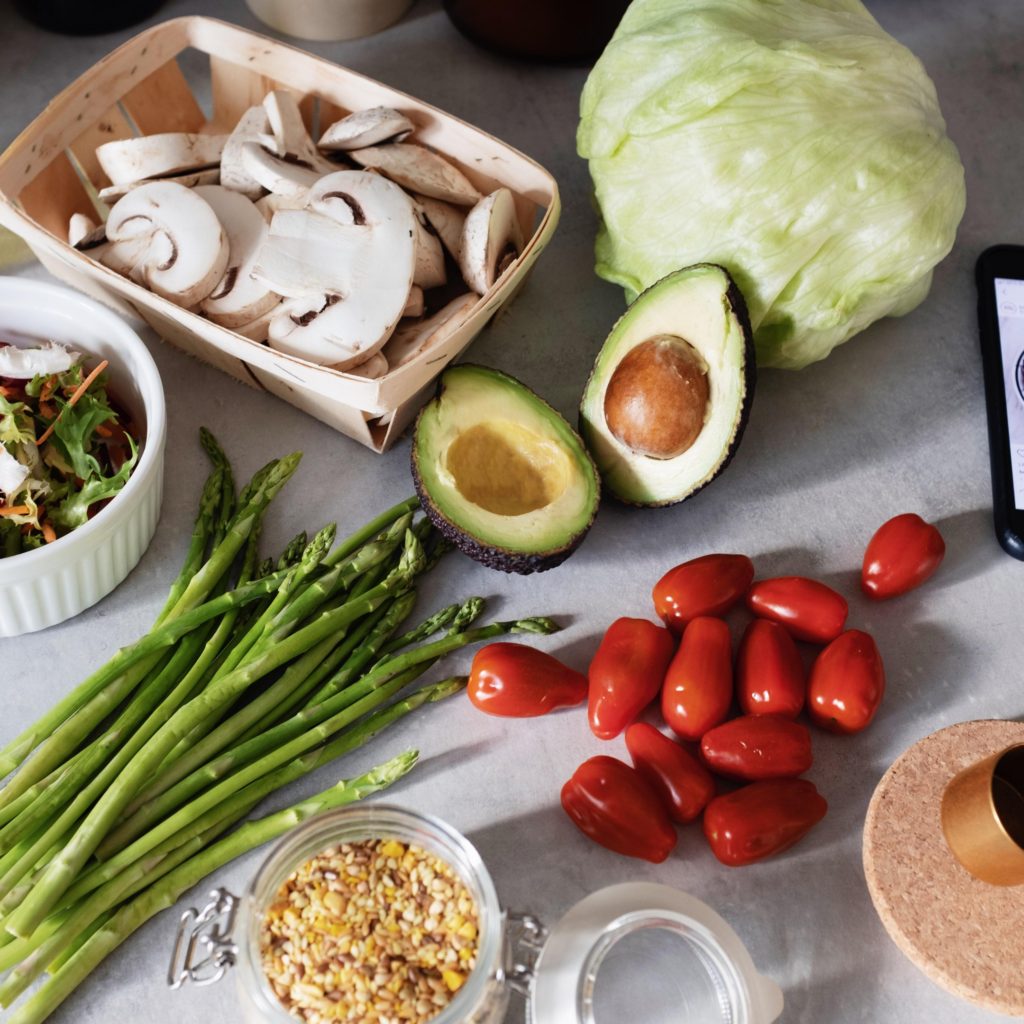What is the low FODMAP diet?
FODMAP stands for Fermentable Oligosaccharides (Fructans and GOS), Disaccharides (Lactose), Monosaccharides (Fructose) and Polyols (Sugar alcohols). These are groups of short chain carbohydrates and sugar alcohols that are poorly absorbed and easily fermentable by bacteria in the colon. They also draw water into the intestines. Some people may be intolerant to some FODMAPs as their fermentation may cause IBS-like symptoms including gas, abdominal pain/distention, bloating, diarrhea and/or constipation. SIBO (small intestinal bacterial overgrowth) may also worsen reactions to foods that are high in FODMAPs since bacteria in the small intestine will ferment carbohydrates before we can break them down.
FODMAPS include sugar alcohols (sorbitol and mannitol), lactose, fructose, fructans and galacto-oligosaccharides (GOS). You’ll notice that some sweeteners and fruits are considered low FODMAP while others are not (like honey vs. maple syrup). This is because glucose is more easily absorbed than fructose. Foods that have more fructose than glucose are considered high FODMAP foods and are eliminated.
What are some foods that are high in FODMAPs?
Many foods are considered to be high in FODMAPs. While following a low FODMAP diet, it is helpful to use the Monash University App that is designed to help take some of the confusion and frustration out of following this restrictive diet. While not an exhaustive list, here are some examples of foods that contain high levels of FODMAPs:
Fructans – Dried fruits, nectarine, persimmon, watermelon, artichoke, garlic, onion, wheat, barley, rye, inulin, chicory root
Galacto-oligosaccharides (GOS) – Lentils, chickpeas, kidney beans, pistachios, cashews, other nuts in large servings like almonds
Lactose – Cow’s milk, ice cream, yogurt, ricotta cheese, cottage cheese, cream
Fructose (in excess of glucose) – Apples, figs, mango, pears, watermelon, artichokes, asparagus, snap peas, honey, agave
Polyols – Apples, apricots, blackberries, peaches, nectarines, pears, cauliflower, mushrooms, sugar alcohol (xylitol)
As you can see, some foods like watermelon, pears and apples contain more than one type of FODMAP and should not be chosen for the initial trial of FODMAP class during reintroduction.
How do you follow a low FODMAP diet?
Eliminate high FODMAP foods for 2-6 weeks and keep a symptom diary to help track food intake and symptom correlation. Again, we highly recommend paying for the Monash app that has a scanning tool, rates foods as low, medium or high FODMAP in a traffic light system and has recipes and meal ideas, too! Remember, the goal is to ascertain individual tolerance to these foods, NOT to be on a restrictive diet long term. Because the low FODMAP diet removes a lot of fiber rich foods that serve as prebiotic fuel for the beneficial bacteria in the microbiome, long term use of this diet may negatively impact the balance of bacteria. Therefore, moving into the challenge or reintroduction phase of this diet is crucial.
Add one trial food from each FODMAP category into the diet every three days and record any symptoms (A helpful app is the My Symptoms app for $2.99). Wait another three days before attempting any other trials. If the food provokes symptoms on any of the three days, continue to avoid that FODMAP group, wait three days, then trial another food from another FODMAP class. For example, if yogurt provokes symptoms, you would not trial milk next, but move onto the a food in the fructose category.
Here is a sample of how to reintroduce in stages:
Stage 1: Add Fructose
- Choose honey, asparagus, sugar snap peas, apples, or mango
Stage 2: Add Sugar Alcohols (Mannitol/Sorbitol)
- Choose mushrooms, cauliflower, apricots, blackberries, or avocado
Stage 3: Add Lactose
- Choose milk, yogurt, ice cream, ricotta cheese or cottage cheese
Stage 4: Add Fructan
- Choose wheat bread, garlic, onions, leeks, ripe bananas, or artichokes
Stage 5: Add Galact-oligosaccharides
- Choose beans, lentils, chickpeas, cashews or pistachios
Example reintroduction for lactose:
Day 1: 4 oz. yogurt
Day 2: 4 oz. yogurt breakfast and lunch
Day 3: 6 oz. yogurt breakfast and lunch
Who should try the low FODMAP diet?
Research shows that between 50-80% of those with IBS or symptoms of gas, bloating, cramping and abdominal pain experience some level of relief and improved quality of life while following the low FODMAP diet. Additionally, if you have been diagnosed with SIBO, following the low FODMAP diet or a version of it may be helpful addition to the treatment protocol for SIBO.
Who is not a good candidate for the low FODMAP diet?
There are some people that might may not be a good fit to try the low FODMAP diet or who should proceed with caution:
- Those who are underweight or malnourished
- Those recovering from an eating disorder
- Those who are elderly or very young children
What if I tried the low FODMAP diet but did not experience relief from symptoms?
If you do not experience symptom relief within 6 weeks, discontinue the low FODMAP diet and explore other options with your clinicians. Think about ruling out other disease with similar presentations such as Celiac Disease, Inflammatory Bowel Disease, SIBO, Gastritis or Gallbladder disease. Additionally, other food sensitivities not related to FODMAP intake might be present that need to be addressed.
Low FODMAP Recipe Ideas and Grocery List
Some of our favorite resources for low FODMAP recipes are Fody Foods website, fodmapfriendly.com and the Monash University website. Here are some quick meal ideas and a grocery list to download to help you navigate the low FODMAP diet.
Breakfast:
Scrambled eggs with low FODMAP veggies (bell peppers, swiss chard, tomatoes)
Quinoa porridge with rice milk, cinnamon and pumpkin seeds
Overnight oats with LF (lactose free) milk, cinnamon, maple syrup, ¼ medium banana and peanut butter powder
Blueberry pancakes made with LF milk/plant milk and GF flour/rice flour
Green Valley LF yogurt w/ 1 T peanut butter
Lunch:
Tuna salad in bell pepper halves
Chicken salad w/ blueberries, feta and walnuts on bed of spinach
Food for Life brown rice wrap with lettuce, chicken/turkey, mustard, tomatoes and cucumbers
Sandwich on Udi’s GF bread
Dinner:
Baked BBQ (Fody Foods BBQ sauce) salmon with brown rice and ½ cup broccoli
Marinated grilled chicken (use Fody Foods Sesame Ginger marinade) with ½ cup sweet potato fries and side salad
Zucchini taco boats (seasoned with Fody Foods Low FODMAP taco seasoning)
Snacks:
Mary’s Gone Crackers
Blue Diamond Nut Thins
Handful nuts + 1 oz. swiss cheese
1 oz. dark chocolate (75-85 % dark) like Alter Eco
Rice cake or 1 slice Schar or Baker’s Delight Lo Fo Bread with 1 T. nut butter
Snyder’s GF pretzels
Hard boiled eggs with handful almonds
If you need more one-on-one help with the low FODMAP diet or are struggling to figure out the root cause of your GI issues send us a message or give us a call!



